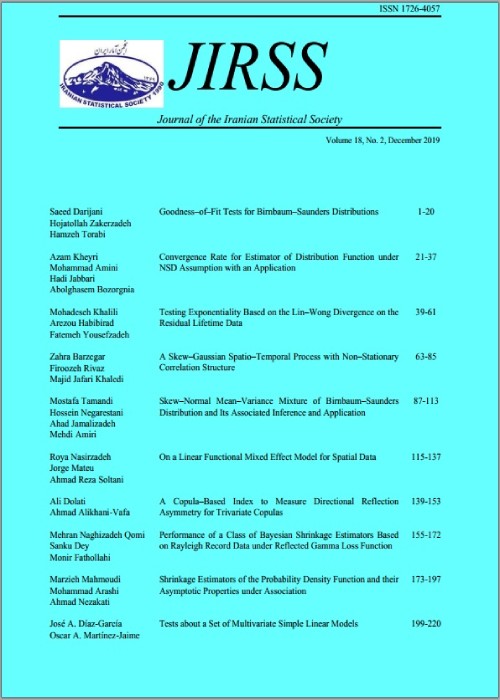فهرست مطالب
Journal of Iranian Statistical Society
Volume:2 Issue: 2, 2003
- تاریخ انتشار: 1382/08/11
- تعداد عناوین: 4
-
-
Pages 145-169Small area estimation has received a lot of attention in recent years due to growing demand for reliable small area statistics. Traditional area-specific estimators may not provide adequate precision because sample sizes in small areas are seldom large enough. This makes it necessary to employ indirect estimators based on linking models. Basic area level and unit level models have been extensively studied in the literature to derive empirical best linear unbiased prediction (EBLUP), empirical Bayes (EB) and hierarchical Bayes (HB) small area estimators and associated measures of variability. In this paper, I will cover several important new developments related to model-based small area estimation. areas (or domains).
-
Pages 171-187The flexibility of the family of Generalized Lambda Distributions (GLD) has encouraged researchers to fit GLD distributions to datasets in many circumstances. The methods that have been used to obtain GLD fits have also varied. This paper compares, for the first time, the relative qualities of three GLD fittingMethodsthe method of moments, a method based on percentiles, and a method that uses L-moments.
-
Pages 189-205A long-running issue in scorecard construction in retail banking is how to handle dramatically unbalanced class sizes. This is important because, in many applications, the class sizes are very different. We describe the impact ignoring such imbalance can haveand review the various strategies which have been proposed for tackling it, embedding them in a common theoretical framework. We then describe a new ’local’ method of scorecard construction which both theory and our experiments show yields superior performance to standard methods, while retaining their interpretative simplicity.We illustrate using real banking data sets.
-
Pages 207-222In this paper we develop an asymptotic theory for estimation based on signed ranks in the ARMA model when the innovation density is symmetrical. We provide two classes of estimators and we establish their asymptotic normality with the help of the asymptoticproperties for serial signed rank statistics. Finally, we compare our procedure to the one of least-squares, and we illustrate the performance of the proposed estimators via a Monte Carlo study.


